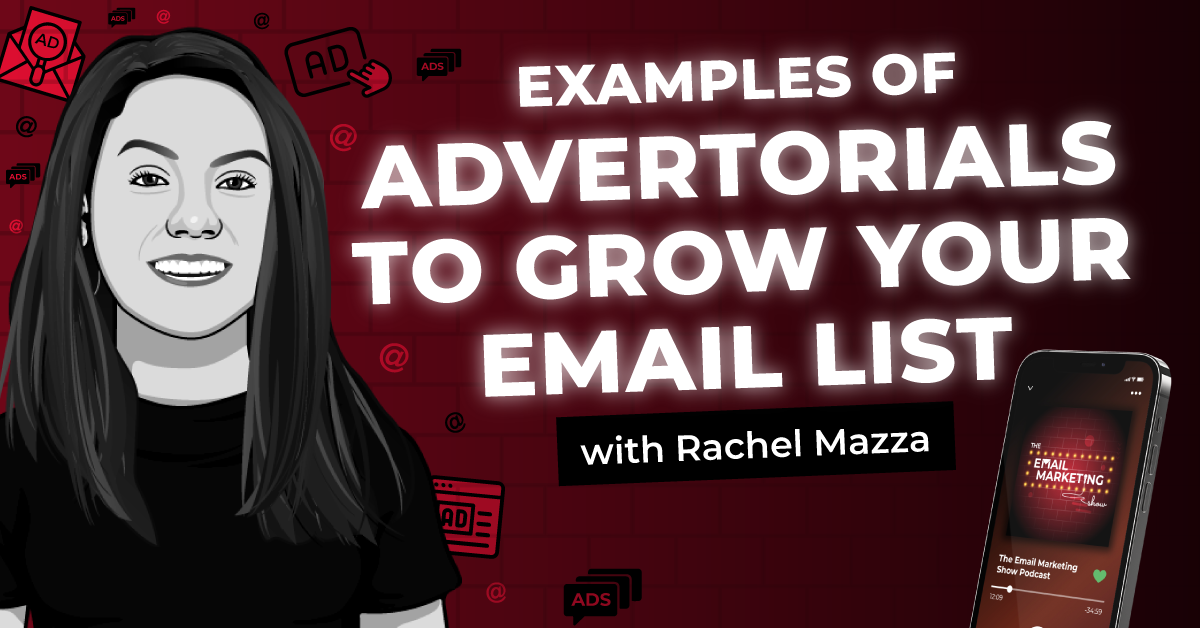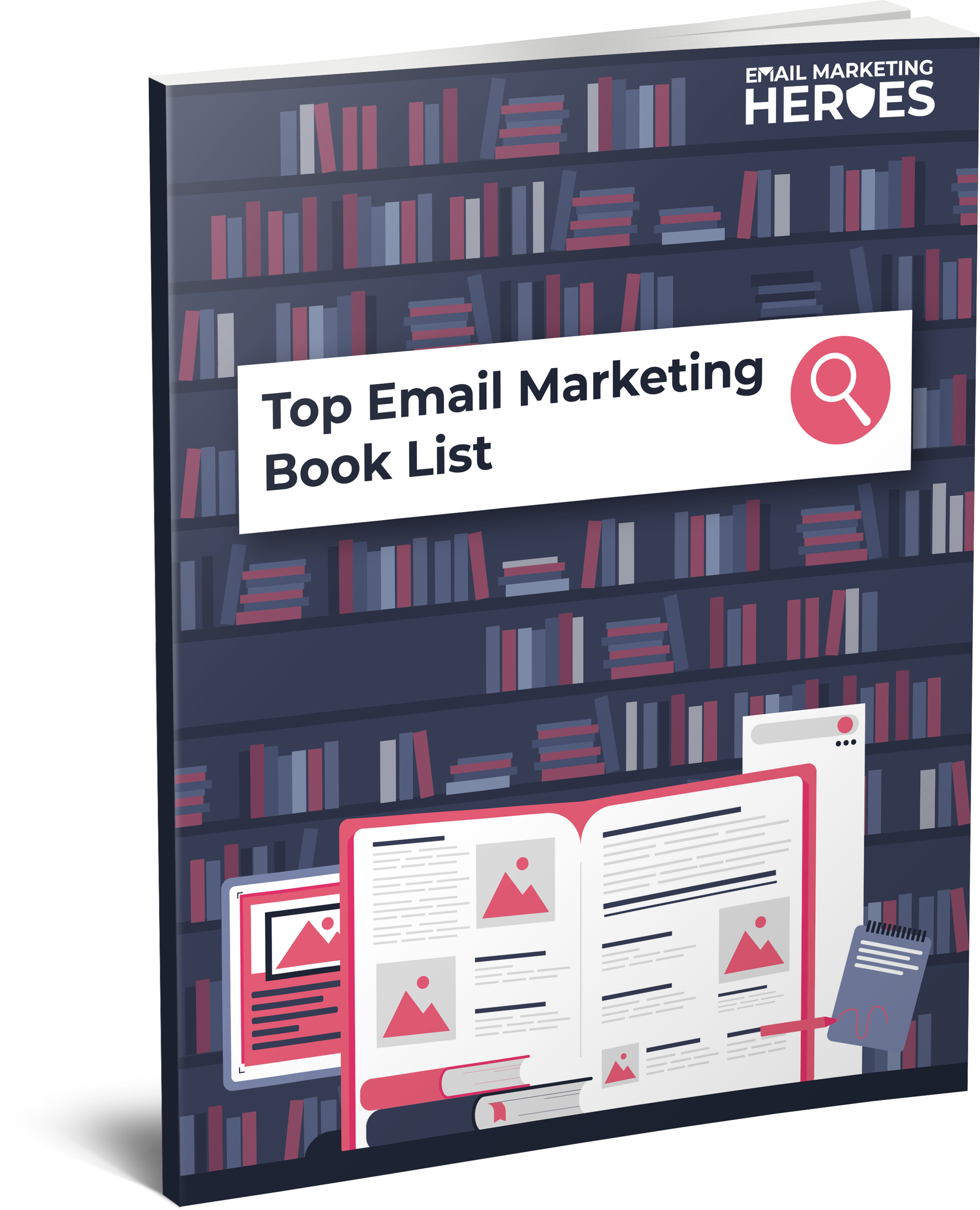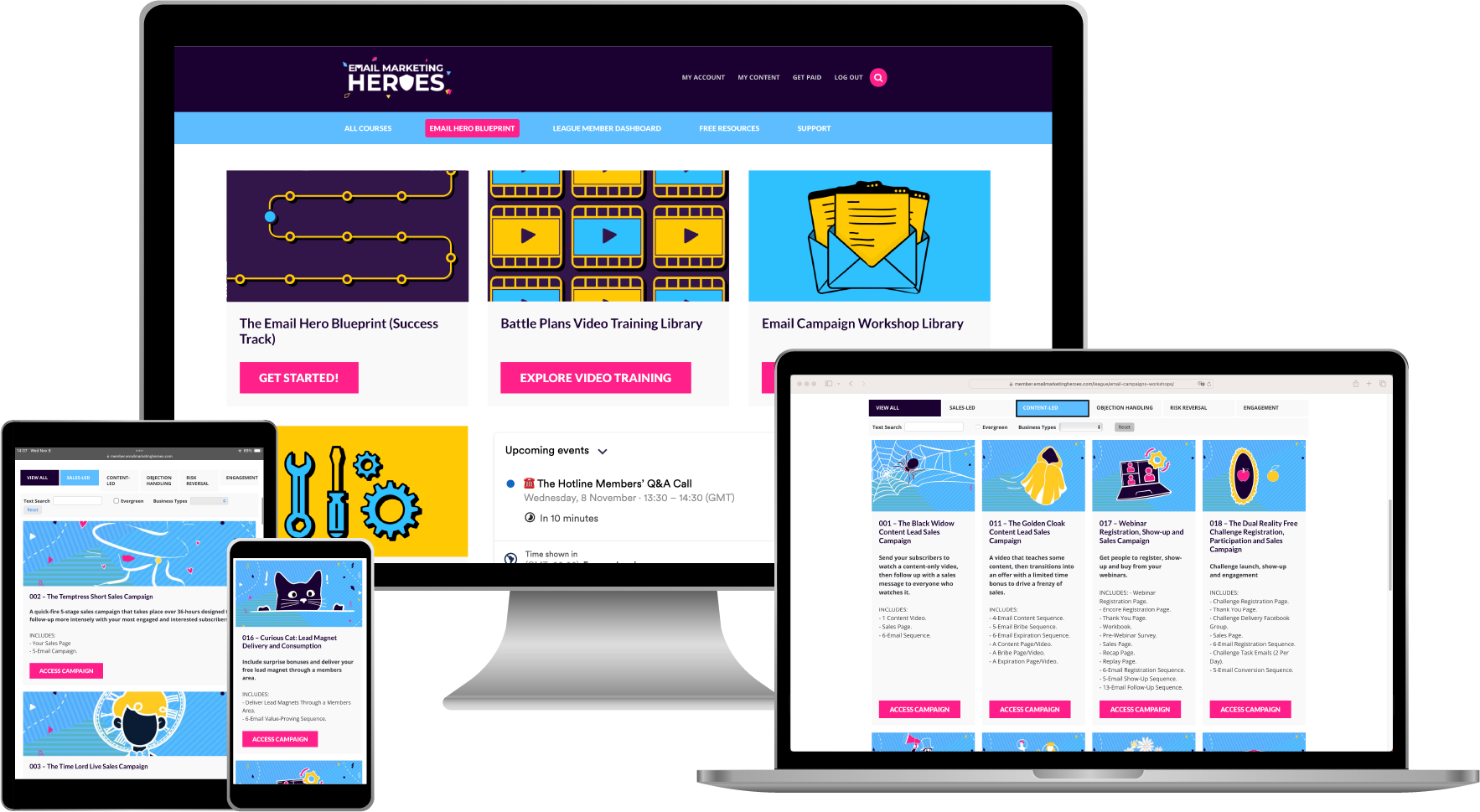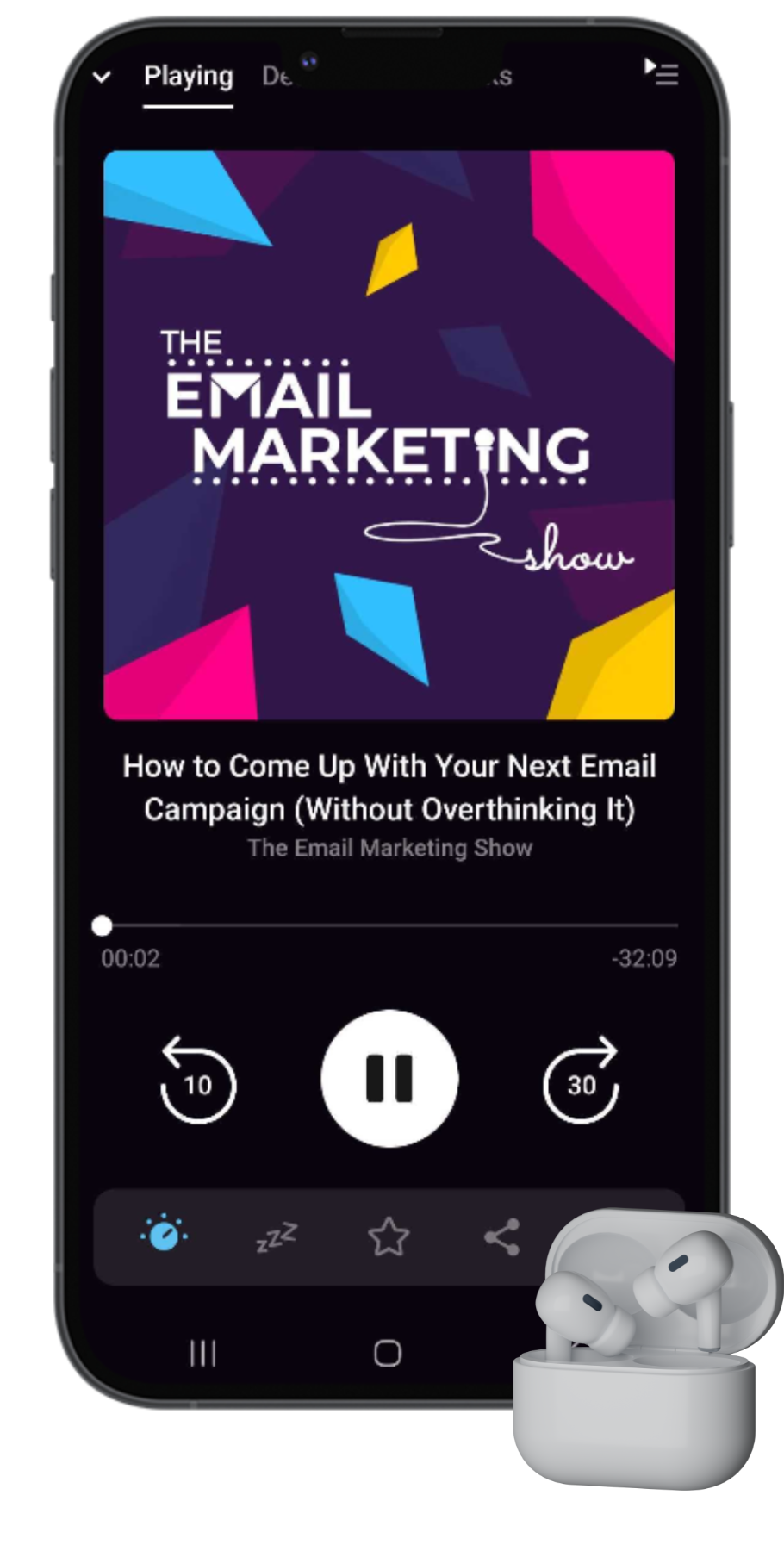
Examples of Advertorials to Grow your Email List with Rachel Mazza
Do you use advertorials in your business? Hang on. Do you even know what advertorials are? Because not many people do (or know what these types of pre-sale pages are called!) So let's hear it from Rachel Mazza, who gives us the ins and outs about advertorials and shares some awesome examples of advertorials you'll want to start using in your business straight away to grow your email list and boost your sales.
Shall we get going?
SOME EPISODE HIGHLIGHTS: (3:18) Did Rachel 'accidentally' move in with lots of other people? (And did Rob REALLY mess this up?) (5:22) What are advertorials and what are they used for? (7:36) How to use advertorials to warm up your audience. (9:29) How to use advertorials to reach a wider audience. (11:08) Advertorials and content networks. (12:23) What format do advertorials need to be in? (14:25) Do advertorials come across as clickbait-y? (20:29) How long do advertorials need to be? (21:10) How do advertorials impact on your ad spend? (27:53) Subject line of the week with Rachel Mazza.
What are advertorials and what are they used for?
Advertorials, also known as pre-sale or interstitial pages, are the pages that go between the initial touchpoint where you first interact with the customer and the place where you want them to convert.
Conversion here could mean buying your offer or joining your email list – whatever you need it to be. And the role of the advertorial is to warm people up before you ask them to take action.
So let's visualise this.
A prospective customer may have come across one of your blog posts or a Facebook ad for the first time, for example. Of course, you'll want to send them to your sales pages or your offer. But at this point, you're faced with a cold and skeptical audience (they don't know you yet!) so you need to get them into the right mindset by providing them with value and information before you ask them for something.
The advertorial page sits between the first piece of content where the prospect might have come across your business or your content for the first time and the opt-in page where you ask them to join your email list or the sales page where you ask them to buy.
All good so far?
How do you use advertorials to ‘warm up' your audience?
In advertorials, you don't want to sell too hard. Because the goal of an advertorial is not to sell – it’s to give someone enough information to take the next step.
There are a couple of ways to do this and move them to the next page.
- You can use anchor text. Let’s say you sell a weight loss product. You might have a line in your article that says, “Jenny lost 30 lbs before Christmas”. And that can become your anchor text, i.e. you add to that phrase the hyperlink to your opt-in page and lead magnet.
- Or you can use subtle CTA (Call to Action) at the bottom of our hypothetical advertorial example where you say something like, “If you'd also like to get results like Jenny, click here to get our free Seven Day Course”, for example.
Just remember not to make it too promotional. When writing advertorial content, you're in a giving mindset – your audience wants to get something useful. And your job is to give them information, entertainment, or something they want to read. Because when it comes to advertorials, they're not interested in buying something – not yet.
How to use advertorials to reach a wider audience
Whether you're buying ad space or trying to grow your audience organically, advertorials help you filter through the people who are interested in what you have to offer. Ultimately, these are the prospects who are more likely to convert.
But at the same time, using advertorials allows you to cast a wider net. Because now that you have people coming in and showing an interest in your content, you can re-target them. So even if you have someone who doesn't take the next step with you just yet, at least you know they're interested in what you have to say. Maybe it wasn't the right time for them to buy. Or maybe they needed more touchpoints or a different angle – for example, because they're part of a different demographic.
Advertorials allow you to test different ideas or angles fairly cheaply. And once you know what resonates with your audience, you can then carry those concepts through your sales pages or landing pages. You are testing ideas before you try and sell to someone. And by the time you do, you already know that these ideas resonate.

The Top 10 Books To 'Power Up' Your Email Marketing
10 book recommendations that will improve all areas of your email marketing (including some underground treasures that we stumbled upon which have been game-changing for us).
Advertorials and content networks
Advertorials work with all traffic sources. They're a really effective strategy for paid ads because they allow you to lower your traffic cost while still converting more cold traffic.
But you can also use content networks. This is still a type of ad, but you’re paying a company (like Taboola, Outbrain, or Adblade, for example) to place your content on a website where people will see it as sponsored content or featured content.
If you think of the majority of the content that you see on websites like Buzzfeed, these are advertorial examples. It's content that's trying to get you to go to someone's opt-in page or sales page.
What format do advertorials need to be in?
Advertorials can take many forms, including listicles, editorial content, or stories. Advertorials are a form of native advertising, i.e. copy or sales material disguised as content. You can think of them as native ads.
For example, the listicles we've all seen on Buzzfeed are advertorials. Each item featured in the article will then have a link to where you can buy the product, for example, or a CTA at the end that drives the readers towards an opt-in page. Listicles work particularly well for e-commerce.
But a lot of advertorials look like editorial and educational articles (“How to” content) or even journalistic articles, like a press release or an announcement.
Rachel's tip is to use personal stories though. You want to tell the story of someone who's just like your ideal prospect who is having a struggle but then finds a solution. And that solution happens to be yours. And if people want to find out more and take the next step with you, they can check out your offer.
Do advertorials come across as clickbait-y?
Advertorials are pre-sale pages. When thinking about the 5 stages of awareness (as per the work of Eugene Schwartz), which are: unaware, problem aware, solution aware, product aware, and most aware, advertorials work particularly well for the people at the unaware stage. These are the people who might not know you yet. In fact, they don't even know they have a problem yet – let alone the fact that there's a solution out there and that you are the person with that solution!
So if you write an article with a clickbait-y headline, it'll only come across that way if you're approaching someone at a different level of awareness than you intend. If someone's never heard from you and you expect them to buy, your content may come across as sales-y and off-putting because it's not pitched at the right stage. They'll feel disconnected from that content, especially if they're just browsing or looking for a potential solution to their problem.
On the other hand, if you have someone who’s ready to buy (i.e. at the most aware stage), they’re looking for a great deal, so they won’t be put off by sales-y content or headlines. Clickbait-type content is relative – it all depends on the level of awareness a prospect is at, at any given time.
Should you create advertorials for different stages of the awareness scale?
Most definitely! You can also have more than one advertorial in your funnel. For example, you could bring people from being totally unaware to being problem aware and then solution aware. You can sometimes do that in one article, but you may need multiple articles. The first step is to make your audience realise they have a problem. Then you want them to know there are solutions out there. And this is where you want to give them more information and touchpoints – because they're not ready to buy into your solution just yet.
Before-and-after case studies, listicles, and story-based articles are great examples of advertorials because they help you make a personal connection with your audience. But you can also get more creative and use different types of formats, like podcast episodes, videos, or infographics.
How long do advertorials need to be?
Advertorials need to be consumable, bite-sized, and catchy. You want someone who’s mindlessly scrolling on Facebook, for example, to stop, click, and read. And if they’re the right audience, then something will click – they’ll want to read it in more detail to learn more.
The goal of advertorials is to get in front of as many people as you can. And those people are going to be extremely high-quality leads because they've already made several micro commitments before they even get to your opt-in page. They've clicked on your ad, for example, they've read it, and they're still interested. They've taken all these steps and are now ready to give you their email address. Awesome!
How do advertorials impact ad spend?
With advertorials you get in front of a very wide audience, but the people that filter through are going to be high-quality leads. This is why more and more businesses (now that ad costs are going up) use advertorials as ads. These are often long-form ads or story-based advertorials that look like content. And they normally lead to the company's low-cost, tripwire product.
Compared to ads, advertorials allow you to test ideas quickly. With paid ads, conversion costs might be lower but testing is also slower. So if you want to expand your audience, you can create super-cheap awareness ads and test the ideas before you run a full-blown campaign to the advertorial.
Ideally, you'll want to write some advertorial-based ads, see which ones get the most engagement, and then take that theme and write a more involved advertorial that you can publish on your website or a third-party website.
What budget do you need to leverage advertorials in your business?
You can run advertorials without spending any money – you can do it organically, using platforms like medium.com, which has a built-in audience. People are already on the platform looking for content. The key is to make the advertorials interesting for the reader and get out of that selling mindset – a giving mindset is going to be more efficient and effective for you. Or you can guest blog or contribute content to podcasts, for example – these platforms can act as channels for your advertorial.
If you decide to spend money on ads, you're going to speed up the conversion process, but you don't have to. You could opt to use content networks to get in front of more people a lot faster. But if you don't have the budget to invest, you can do this organically by posting content on your website and using organic SEO to drive people to those articles or by publishing your content on third-party websites, which gives it a little more credibility.
If you decide to use content networks, your spend is linked to the number of impressions your content gets, so you can work with any budget. It's about figuring out what works for that market. If you have a high-converting, proven offer, you might want to invest a lower budget because you know you can break even or make a return on ad spend a lot faster.
In a nutshell, content networks allow you to test concepts a lot better because they're placing your advertorial where people are already consuming other content, so you might find this an even better strategy than paid ads.
Subject line of the week
Rachel’s subject line of the week is “Just checking…”
Rachel uses this subject line when people first opt into her list. Eight hours after they've signed up, they receive an email with this subject line, where Rachel asks them to reply to let her know they got her guide.
But she also uses it for someone called Dean Jackson, creator of the email marketing strategy called The Nine-Word Email. And it’s just what it says on the tin – an email with 9 words in it. Like, “Hey, are you still interested in losing weight, Rachel?” Rachel tells us it's hard to just stick to 9 words, but it's super effective!
Don't you just love this?
Useful Episode Resources
About Rachel
If you want to connect with Rachel, you can find her on her website, where you can grab her FREE guide with the exact 8 steps Rachel uses to write advertorials.
Related episodes
Build Your List using Viral Ads with Dave Rotheroe from Grip Advertising.
Facebook Groups Marketing – Content That Makes Sales with Christina Jandali.
Courageous Content with Janet Murray.
FREE list of the top 10 books to improve your email marketing
Want to write better emails? Come up with better content? Influence and move your readers to click and buy? Well, you can do that with this list of our Top 10 most highly recommended books! They will improve all areas of your email marketing (including some underground treasures that we happened upon, which have been game-changing for us). Grab your FREE list here.
Join our FREE Facebook group
We know your business is different, so come and hang out in our FREE Facebook group, the Email Marketing Show Community for Course Creators and Coaches. We share a lot of training and resources, and you can talk about what you're up to.
Try ResponseSuite for $1
This week's episode is sponsored by ResponseSuite.com, the survey quiz and application form tool that we created specifically for small businesses like you to integrate with your marketing systems to segment your subscribers and make more sales. Try it out for 14 days for just $1.
Join The League Membership
Not sick of us yet? Every day we hang out in our amazing community of Email Marketing Heroes. We get to share all of our training and campaigns and a whole bunch of other stuff. If you're looking to learn how to use psychology-driven marketing to level up your email campaigns, come and check out The League Membership. It's the number one place to hang out and grow your email marketing by applying everything we talk about in this show.
Subscribe and review The Email Marketing Show podcast
Thanks so much for tuning into the podcast! If you enjoyed this episode (all about examples of advertorials) and love the show, we'd really appreciate you subscribing and leaving us a review on your favourite podcast player.
Not only does it let us know you're out there listening, but your feedback helps us to keep creating the most useful episodes. And, you know what? We also get to be discovered by more awesome people like you!







